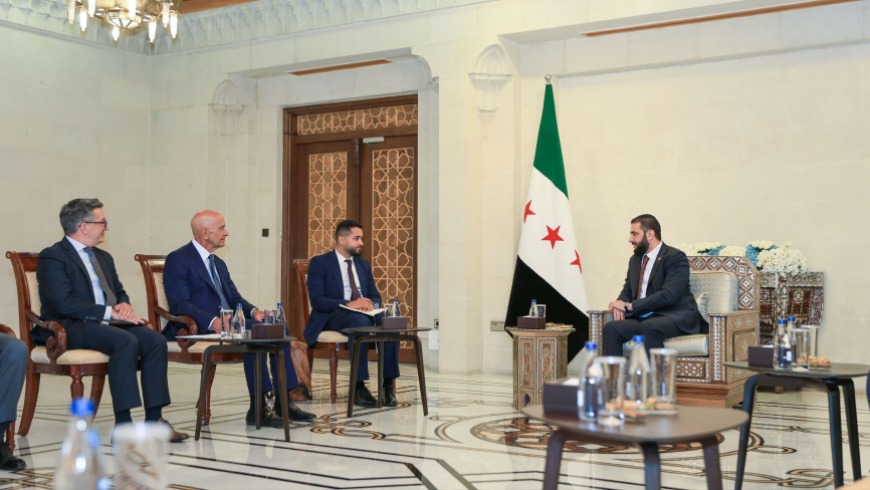Syrian President Ahmad al-Sharaa held a high-level meeting on Wednesday with U.S. special envoy to Syria Tom Barrack and a representative from the U.S. State Department’s Eastern Syria desk. The meeting took place at the People’s Palace in Damascus, marking a new chapter in U.S.–Syrian engagement amid ongoing efforts to implement the March 10 agreement between the Syrian government and the Syrian Democratic Forces (SDF).
In parallel, another meeting was held at the Tishreen Palace between Syrian government officials and representatives of the Autonomous Administration of North and East Syria, in the framework of efforts to move forward with the four-month-old accord.
According to Syria’s state television, President Sharaa received Barrack and his delegation in the presence of Foreign Minister Assaad al-Shibani. The official statement emphasized that the visit was part of a broader effort to enhance political dialogue and explore avenues of cooperation between Damascus and Washington—though it made no mention of SDF commander Mazloum Abdi, whose presence is widely expected.
Four Files on the Table
A Kurdish source familiar with the meeting told AFP that the talks are centered on four main issues:
- The future structure of the Syrian state,
- The relationship between the Autonomous Administration and the central government,
- Economic arrangements, and
- The status of military forces in the northeast.
On Tuesday, sources revealed to Syria TV that a trilateral meeting—bringing together President Sharaa, Mazloum Abdi, and Tom Barrack—is expected to convene soon, with the goal of finalizing the March 10 agreement and introducing amendments requested by the SDF in coordination with the U.S. The adjustments reportedly concern the timeline for implementation, set to expire at the end of 2025, and new demands raised by Kurdish political parties.
The same source added that France is expected to join the United States in overseeing the implementation of the agreement and preventing potential military escalations.
In addition to the March deal, the U.S. envoy is also expected to discuss continued cooperation between the U.S.-led Coalition, the SDF, and the Syrian government in combating ISIS, particularly in areas where the SDF operates detention camps and prisons holding thousands of ISIS fighters, including foreign nationals.
Background: The March 10 Agreement
The agreement signed between President Sharaa and Mazloum Abdi includes major provisions:
- Full integration of civilian and military institutions in northeast Syria into the Syrian state.
- The handover of border crossings, airports, and oil and gas fields to the central government.
- Recognition of the Kurdish community as an integral part of the Syrian nation, with guarantees of full constitutional rights.
- Rejection of separatist rhetoric, hate speech, and efforts to sow division among Syria’s communities.
However, since the signing, the Autonomous Administration has criticized aspects of the constitutional declaration and the subsequent formation of the transitional government, claiming it does not reflect Syria’s diversity. In response, Kurdish political parties last month reiterated their demand for a decentralized democratic state—a position Damascus continues to reject as an attempted imposition of de facto partition.
The Military File: Unresolved
Despite President Sharaa’s earlier decree dissolving all armed factions following the regime’s collapse, the U.S.-backed SDF has retained its military structure and control over vast territories in northern and eastern Syria. These regions include strategic oil and gas fields, giving the group considerable leverage.
In a televised interview in late May, Abdi reaffirmed commitment to the agreement, noting that implementation was underway through joint technical committees. However, he insisted on a decentralized Syria where no community is excluded and all groups enjoy equal rights.
Meanwhile, Foreign Minister Shibani has warned that continued delays in implementing the agreement could prolong the country’s instability.


